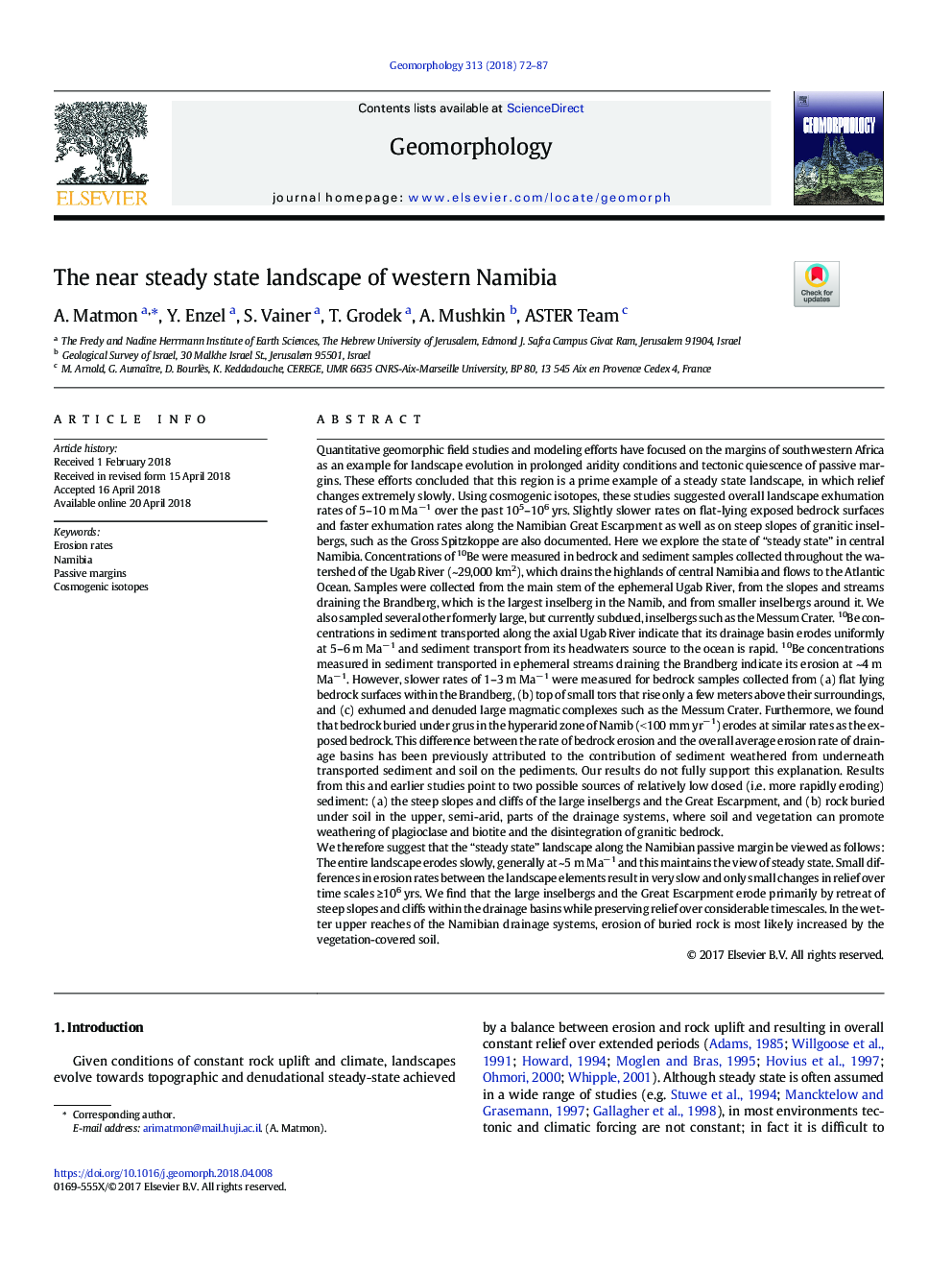| Article ID | Journal | Published Year | Pages | File Type |
|---|---|---|---|---|
| 8908004 | Geomorphology | 2018 | 16 Pages |
Abstract
We therefore suggest that the “steady state” landscape along the Namibian passive margin be viewed as follows: The entire landscape erodes slowly, generally at ~5â¯mâ¯Maâ1 and this maintains the view of steady state. Small differences in erosion rates between the landscape elements result in very slow and only small changes in relief over time scales â¥106â¯yrs. We find that the large inselbergs and the Great Escarpment erode primarily by retreat of steep slopes and cliffs within the drainage basins while preserving relief over considerable timescales. In the wetter upper reaches of the Namibian drainage systems, erosion of buried rock is most likely increased by the vegetation-covered soil.
Related Topics
Physical Sciences and Engineering
Earth and Planetary Sciences
Earth-Surface Processes
Authors
A. Matmon, Y. Enzel, S. Vainer, T. Grodek, A. Mushkin, ASTER Team ASTER Team,
